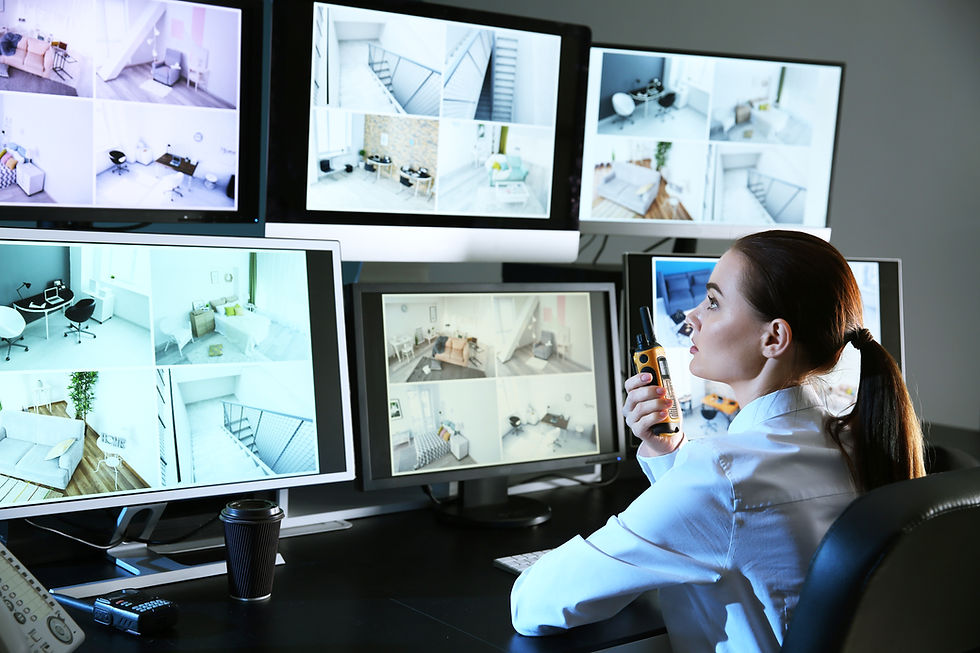7 Future Home Technologies You Should Know in Advance
- Boris Van Makenform
- May 15, 2019
- 4 min read
Updated: Apr 29
While futuristic technologies in sci-fi movies may seem far off, many of them are already beginning to appear in our homes. Modern advancements have made it possible to control everything from lights to thermostats through our smartphones — and that’s just the beginning.
Here are seven emerging home technologies that are shaping the future of how we live.

1. Automated Robots
We may not yet have humanoid robots preparing dinner or folding laundry, but robotic automation is already a reality in many homes. Devices like the iRobot Roomba or Neato quietly clean floors without any human guidance, offering a taste of what domestic robotics can do. In Germany, scientists have developed a more advanced prototype — a one-armed robot with three fingers that can pick up items, tidy up, operate household appliances, and even serve drinks to guests. It’s equipped with safety sensors, responds to voice commands, and features an embedded touchscreen for manual control. While this kind of robot isn’t yet mainstream, it signals a future where robotic helpers may become as common as dishwashers.
2. Smart Appliances
As our phones, watches, and even jewelry become smarter, so do household appliances. Today’s smart refrigerators, ovens, washers, and dryers often come with touchscreen displays, internet connectivity, and sensors that allow them to monitor usage or suggest improvements. Some can even send alerts to your phone or integrate with other smart systems in the house. Imagine a fridge that dispenses water as you enter the kitchen, or a microwave that adjusts cooking time based on what you’ve placed inside. These appliances will only become more intuitive over time, learning your preferences and routines to make everyday tasks more efficient. That said, they also raise important questions about data privacy and how much of our behavior companies may track.
3. Lighting Controls
Turning on a lamp using a wall switch already feels outdated. In many homes, lighting is now managed through mobile apps, touchscreen panels, or voice commands. Some smart systems can be scheduled to simulate your presence when you’re away or adjust brightness according to the time of day. The Nest thermostat, for example, can be programmed to switch on the lights and cool the air when you return from vacation. As this kind of functionality becomes more common, experts expect advanced lighting controls to be a standard feature in newly constructed homes.
4. Power Tracking and Energy Efficiency
Just as your car can alert you when it needs maintenance, your home is beginning to do the same. Energy management systems now allow homeowners to track real-time electricity consumption, set usage goals, and receive alerts when something isn’t performing efficiently. Powerhouse Dynamics, for instance, offers a platform that monitors energy use, calculates associated costs, and even tracks a home’s carbon footprint. It can analyze each appliance and recommend upgrades to more energy-efficient models. As energy prices rise and environmental concerns grow, these systems are expected to become a common part of home infrastructure.
5. Smart Toilets
It might sound unusual, but toilets are getting smarter — and they’re doing more than just flushing hands-free. In Japan, certain models can analyze urine to check for signs of diabetes or other health conditions. In the near future, toilets could detect pregnancy or even screen for colon cancer. Brands like Kohler are already pushing this technology forward with high-end models like the Numi, which includes a heated seat, foot warmer, deodorizer, bidet features, a touchscreen control panel, and even built-in music playback. These features aren’t just luxurious — they represent a shift toward everyday health monitoring right in the home.
6. Centralized Entertainment and Streaming
The future of home entertainment is moving away from cable boxes and toward fully integrated, internet-based systems. Streaming services like Netflix, Hulu, and YouTube are already replacing traditional TV for many people. In future homes, entertainment will likely be managed from a centralized system accessible via phones or tablets, eliminating the need for cluttered cables or outdated equipment. These systems could be built into the home’s infrastructure, relying on Wi-Fi or closed Ethernet networks to deliver seamless access to all your favorite content, whether you're watching in the living room or streaming music in the kitchen.
7. Closed and Private Networks
As more devices connect to the internet, protecting your data and privacy becomes increasingly important. In tomorrow’s homes, closed and private networks will provide a secure environment where all smart devices can communicate without exposure to external threats. Instead of relying on off-the-shelf routers, future homes may come equipped with pre-installed wireless infrastructure that supports device-to-device communication while keeping data within the home. Facial recognition could enable keyless entry, while private CCTV systems let you check in remotely from anywhere in the world. These networks will also support emergency alert features, allowing homeowners to take action quickly if something goes wrong.
Looking Ahead
These technologies might sound futuristic, but many are already available in early forms — and they’re quickly becoming more accessible. Whether it's through smarter appliances, AI-powered assistants, or built-in health monitoring, the homes of the future are being designed not just to serve us, but to anticipate our needs. In the coming years, smart home technology won’t be a luxury — it will be an essential part of everyday life.




Comments